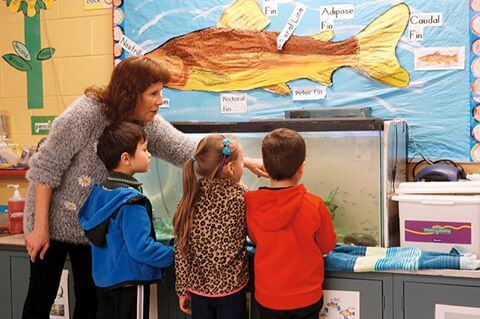A letter from our editor, Zack Harold:
For as long as humans have walked the Earth, we have been compelled to make things that last.
You can see this compulsion in great works of literature, music, and visual art, but it’s especially evident in architecture, from the pyramids of Giza to the Eiffel Tower to the big gold dome in Charleston.
What drives this desire to reach into the future? I think it’s existential. Our lifespans are so short, and we know that, when we’re gone, the world will continue on without us. By creating things that stand the test of time, we can affirm our humanity to future generations. We’re saying, “We had hopes and ideas, too. Don’t forget about us.
“This struck me while I was working on this month’s story about the Grave Creek Stone (page 4). I’m ashamed to admit it, but I have never given much thought to the Native American burial mounds that dot our state. That changed after I interviewed Andrea Keller, programming coordinator at the Grave Creek Mound Archaeological Complex.
Although the Grave Creek Mound started as a naturally occurring hill, the Adena people dumped millions of baskets of earth on top to create the large mound we see today. “They were making a sacrifice,” Keller told me. She’s right. The Adena could have spent that time hunting or fishing or just taking naps, but they chose to heft load after load of soil up this hill. They sacrificed their time and labor, all in an effort to touch the future. It’s their way of saying, “The people we buried here mattered to us. Remember them.
“Posterity is a tricky thing, of course. Vincent Van Gogh and Emily Dickinson died thinking they were creative failures. Meanwhile, artists and writers and musicians who were outrageously popular in their own times have vanished into the fog of history.
As far as I’m concerned, there’s only one guaranteed way to cement your legacy.
The 19th- century historian, journalist, and novelist Henry Adams said it best: “A teacher affects eternity; he can never tell where his influence stops.
“Take Holly Lampl, for example. She’s a kindergarten teacher at Albans Elementary School in Kanawha County where, for the past several years, she has raised brown trout as part of Trout in the Classroom, a national program run by Trout Unlimited.
As you’ll read in Wendy Holdren’s story on page 26 of our March issue, participating in the trout project is an incredible sacrifice on Lampl’s part. In addition to wrangling her 20 kindergarteners, Lampl also has to make sure the 150 baby trout in her 55-gallon tank have what they need to thrive. She cleans the tank every three days. When the county closes school for a snow day, she still trudges to her classroom to feed her fish. When the power goes out, she dumps ice in the tank to keep the water nice and chilly.
Why does Lampl do it? Simple. She’s trying to affect eternity.
By raising trout with her students—and later releasing them in Kanawha State Forest—she gives each of the kids a personal connection to their environment. They will carry that connection into adulthood and, whether they grow up to become a DNR biologist, a passionate angler, or a kindergarten teacher raising a future generation of nature lovers, Lampl’s influence will live on in her students’ advocacy for West Virginia’s woods and waters.
She’s not just touching the future. She’s shaping it, too.
Thank a teacher today,
Zack Harold, Managing Editor
Wonderful West Virginia Magazine

